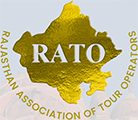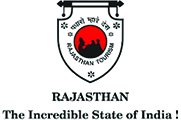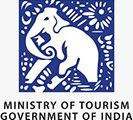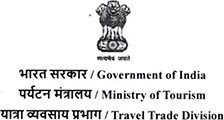Rajasthan Wildlife Tour for 5 Nights 6 Days
If you’re someone who loves nature, animals, and peaceful surroundings, this Rajasthan Wildlife Tour for 5 Nights 6 Days is made just for you. The journey starts from Jaipur, where the charm of old forts and colorful streets sets the mood. From there, we head to Ranthambore, one of India’s most famous national parks. Here, you might get lucky and spot a tiger in the wild, along with many other animals and birds.
Next, we move to Bharatpur, known for the amazing Keoladeo Bird Sanctuary. It’s a peaceful place filled with vibrant birds and calm waters. After that, we visit Deeg, a small town with beautiful gardens and royal palaces that feel like a dream. Our next stop is Sariska, where dense forests and rocky hills hide many wild secrets.
Rajasthan Wildlife Trip Itinerary for 6 Days
This unforgettable journey ends back in Jaipur. These Jaipur Ranthambore Bharatpur Deeg Sariska tour packages for 6 days are perfect for anyone who wants to enjoy Rajasthan’s wild and natural beauty.
Cities You Can Visit with 6 Days Rajasthan Wildlife Holiday
- Jaipur
- Ranthambore
- Bharatpur
- Deeg
- Sariska
- Jaipur
Rajasthan Wildlife Tour for 6 Days
As soon as you arrive at the airport or railway station, our friendly representative will be there to greet you with a warm smile. After a quick and pleasant meet-and-greet, you’ll be guided to your vehicle for a smooth drive to your hotel. Once you reach, we’ll assist you with an easy check-in process. Now it’s time to relax, freshen up, and get ready for the exciting journey that awaits you in the days ahead.
After breakfast, we will take an excursion to Amber Fort, located about 12 km from Jaipur. It was the ancient capital of the Rajput rulers of Kachhwaha. This unique wonder is a must-see on any Rajasthan tour itinerary. Construction of the fort-palace began in 1592 by Maharaja Man Singh, a Rajput commander in Akbar’s army. It was later expanded by the Jai Singhs before moving their capital to Jaipur.
The fort is a magnificent example of Rajput architecture, with a prime location on a hillside overlooking a lake. You will thoroughly enjoy the ride up to the palace on the back of a brilliantly decorated elephant. We will visit the many chambers and corridors of this palace, famous for their designs and decorations.
In the afternoon, we will take a tour of the city’s most iconic structures. We first visited the Jantar Mantar, a magnificent stone observatory built by Raja Jai Singh in 1728, known for his passion for astronomy. The Jaipur observatory is the largest and best preserved of the five he built; the other four are located in Delhi, Varanasi, Ujjain, and Muthura.
We then visited the opulent City Palace, a former royal residence, built in a blend of Rajasthani and Mughal styles. The palace houses fabulous museums displaying an excellent collection of miniature paintings, traditional costumes, and armory.
Later, we stopped by the fascinating Hawa Mahal (Palace of the Winds), one of Jaipur’s main monuments. Built in 1799, this five-story building is a stunning example of Rajput art. It was originally built so that the ladies of the royal household could observe daily life and the city’s processions.
After breakfast, we will head to Ranthambore National Park, located near the town of Sawai Madhopur, halfway between Bharatpur and Kota. This park is one of the finest examples of Project Tiger’s conservation efforts in Rajasthan.
The park covers an area of approximately 1,334 km² and is home to the famous Bengal tigers, leopards, bison, deer, crocodiles, and other exotic wildlife.
Ranthambore is a very picturesque place and is located in a truly idyllic natural setting. A system of small lakes and rivers is surrounded by high, rugged cliffs, and atop one of these hills stands the imposing and enchanting Ranthambore Fort, built in the 10th century AD. The lowland area alternates between open scrubland and dense forest and is dotted with the ruins of pavilions and chhatris (domed kiosks). This area was once a nature reserve and hunting ground for maharajas and members of the royal entourage.
Other attractions in this park include the Ganesh Mandir, a temple dedicated to the elephant-headed deity Ganesh (the eldest son of Lord Shiva), as well as the Padam Talao, a serene and beautiful lake known for its abundance of water lilies.
Enjoy an exciting jungle safari, scheduled for the morning and afternoon. The park is open only during the months of March to June and October to February. It is closed for three months during the monsoon, from July to September.
After breakfast at the hotel, we will head to Bharatpur.
Now known as Keoladeo National Park, Bharatpur National Park is a famous birdwatching paradise and is listed among the World Heritage Sites.
Lohagarh Fort is known as the Invincible Fort of India. Literally, it means Iron Fort. This fort has withstood repeated attacks from both Mughal and British forces.
Bharatpur Museum. The Bharatpur Palace, dating back to the 2nd century, is a testament to the grandeur and opulence of Mughal-Rajput architectural designs. Built entirely of white marble, this splendid palace has been converted into a heritage hotel. A small section of the palace, called Kamra Khase, has been converted into a museum.
After breakfast at the hotel, we will head to Sariska. On the way, we will stop in Deeg to visit Deeg Fort, with the Roop Sagar River flowing alongside. This huge and magnificent fort on the elevated coast is a favorite with tourists. Built in 1772, this fort was strategically located in this location due to its proximity to Agra.
Deeg is home to several havelis from the late 17th and early 18th centuries, deeply inspired by Mughal architecture and designs. Most of them are built of marble and follow a common design.
After the visit, we will continue to Sariska. Sariska National Park is located in the Alwar district of Rajasthan, India. It is surrounded by the Aravali Hills, the oldest mountain range in India. Sariska was made a wildlife sanctuary in the year 1955 and was upgraded to a Tiger Reserve later in the year 1978. Sariska National Park and Tiger Reserve is spread over an area of 1203.33 sq km (881.11 sq km core / 322.22 sq km buffer zone), check in at the hotel and in the afternoon enjoy a jungle safari.
Panadol is located 21 km from the main entrance to Sariska Tiger Reserve (Sariska Gate). It is a 6 x 4.5 meter hole at a height of 91 meters. This gate, located in a mound, was built by Bhim of the Mahabharata, using his gada (mace) to collect water. In the same valley, just 0.5 km before Pandupole, is a temple of the Sleeping Lord Hanuman. It is believed that Hanuman broke Bhim’s boast and blessed him here.
Siliserh Lake
Siliserh Lake is located 13 km from the city of Alwar. It boasts abundant fish and aquatic vegetation that provide food for birds and is a true treasure trove of natural resources. It is home to one of the largest populations of crocodiles. The rich biodiversity, which includes ungulates, reptiles, birds, butterflies, and dragonflies, is worth admiring. The gorges, plateaus, and soft shadows offer visitors the opportunity to enjoy hiking and boat rides. Afterward, you will continue your journey to Jaipur. At the end of this visit, we will head to the Jaipur airport/railway station for your return flight home.
We deeply appreciate your use of our services and hope you have been satisfied with our commitment to providing the best care and attention to our distinguished guests.
We believe that this visit was a wonderful experience, and we are sure that you will have unforgettable memories.
Need Help ?? Contact us..!!
Mail Us
info@rajasthantourismbureau.com
Call Us
+91-9928026027 / +91-141-6783026
For details or any other query please contact below :
How It Works
- Choose from our curated tour packages designed around diverse interests and destinations, or create a custom travel itinerary for a journey that's uniquely yours.
- Once we receive your email, you can expect a prompt response within 24 hours, complete with a detailed itinerary tailored to your preferences and needs.
- Enjoy the convenience of secure online payment, or choose to pay upon arrival—whichever option best fits your preferences and travel plans.
- 5000+ Completed Tours with happy Clients
- 25+ Years of experience
- Globally Recognized As best Tour Operator





